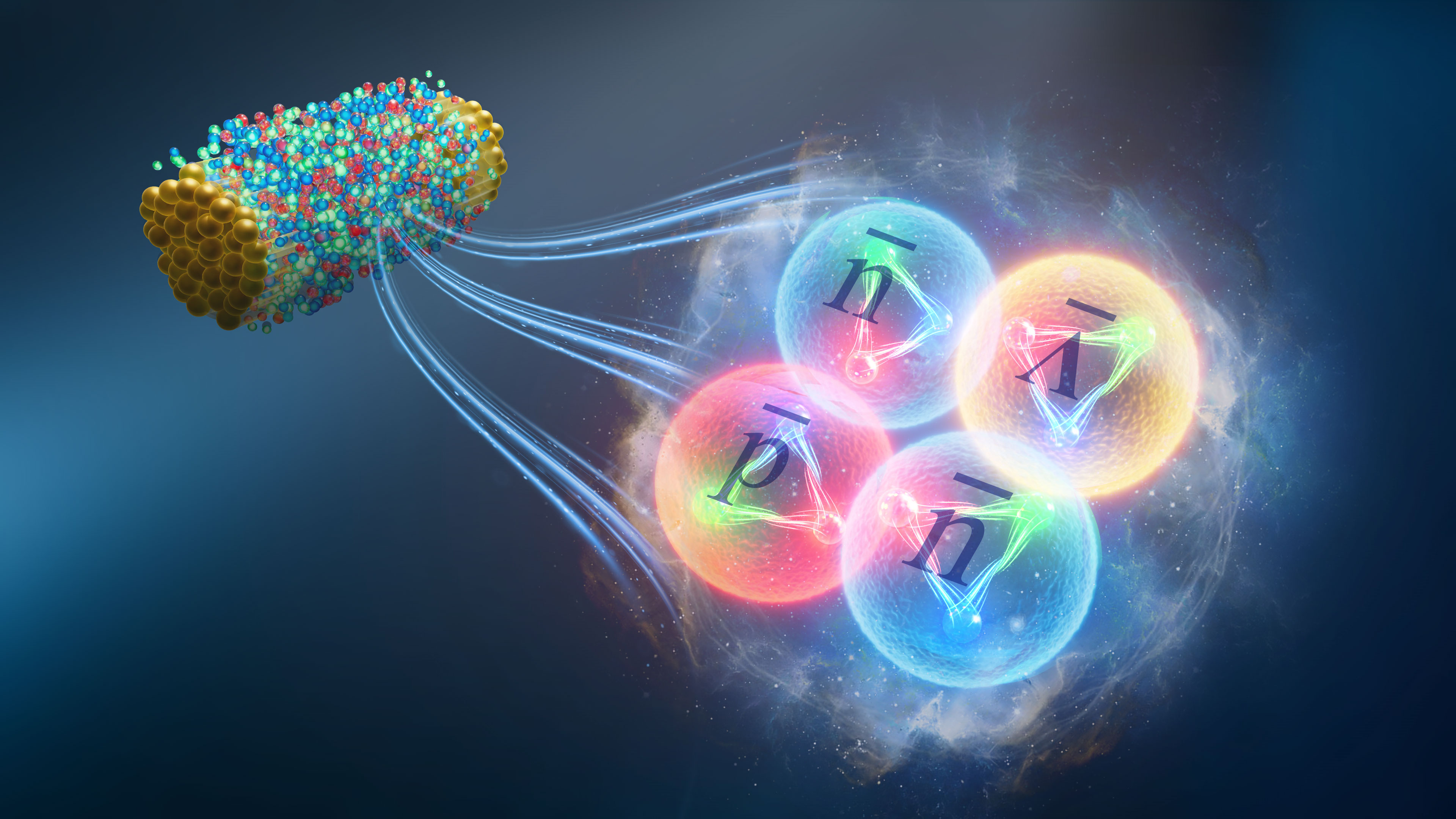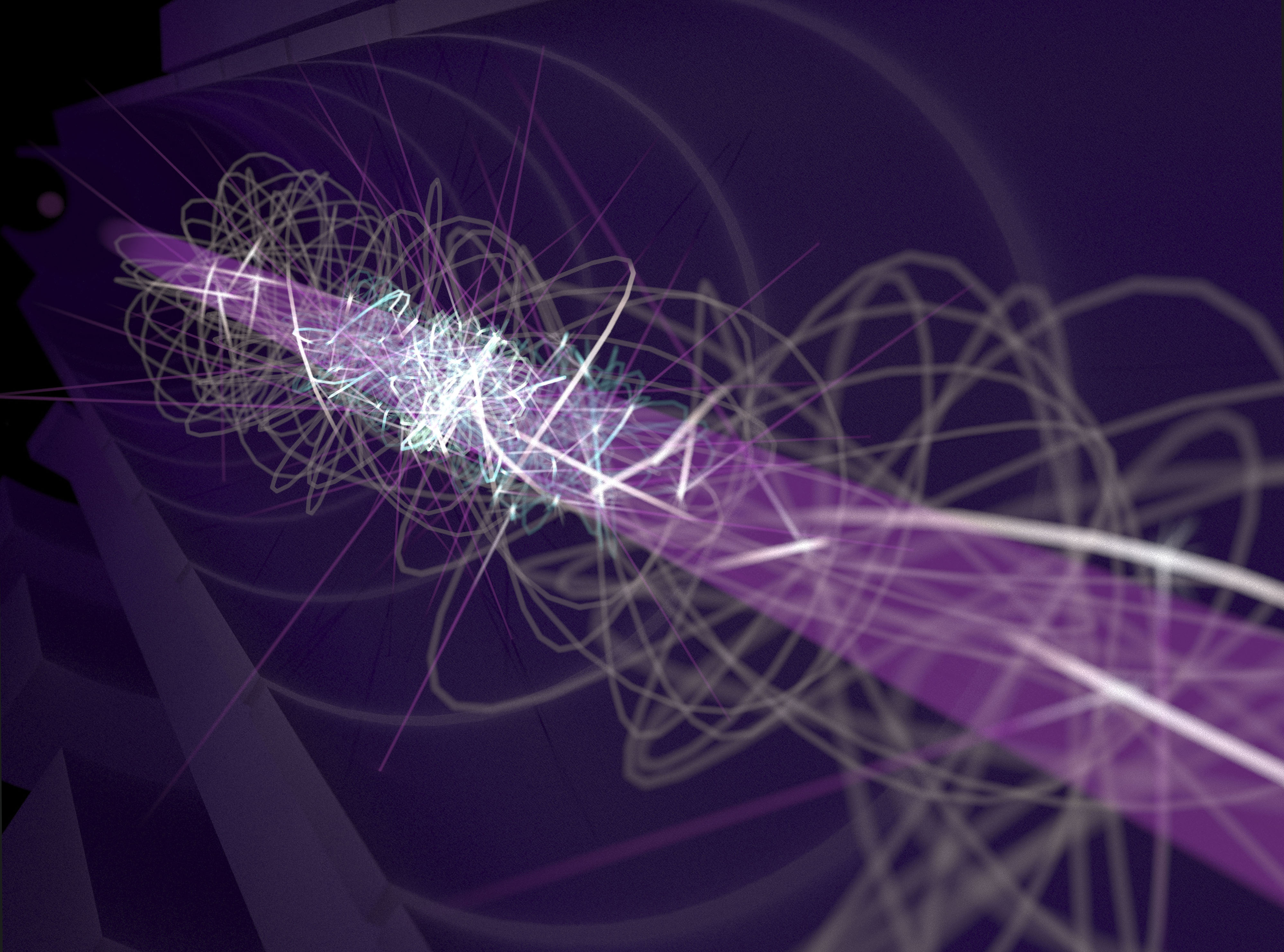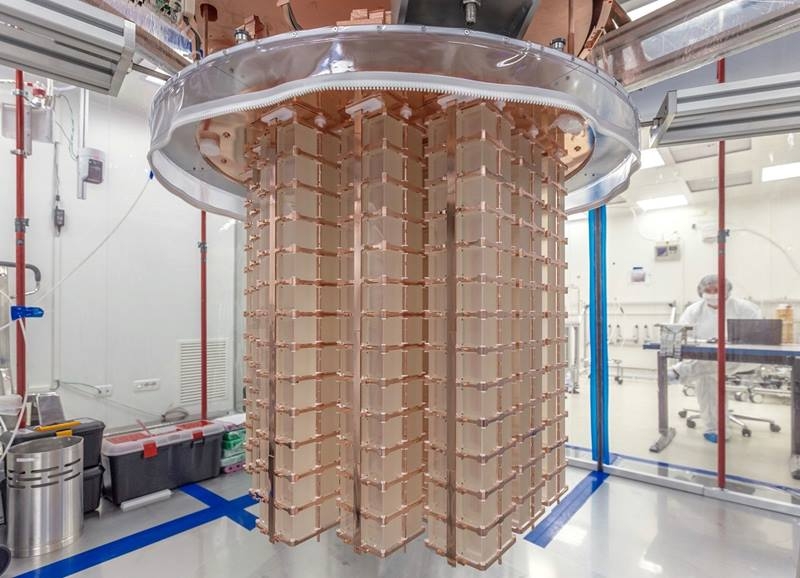Underground at the Switzerland-France border, the Large Hadron Collider (LHC) at CERN holds the record for the world’s largest particle accelerator. Its ring alone is nearly 17 miles around. With this tool, scientists smash together subatomic particles to help them better understand the tiny building blocks of the universe. One area that scientists use the LHC to study is the quark-gluon plasma.
Tag: Antimatter

New Heaviest Exotic Antimatter Nucleus
Scientists studying the tracks of particles streaming from six billion collisions of atomic nuclei at the Relativistic Heavy Ion Collider (RHIC) — an “atom smasher” that recreates the conditions of the early universe — have discovered a new kind of antimatter nucleus, the heaviest ever detected.
Antihydrogen Falls Downward!
Scientists have indirect evidence that antimatter falls the same way as matter.
Expert available to comment on CERN’s Antimatter experiment
Professor Glenn Patrick is a visiting professor in the School of Mathematics and Physics at the University of Portsmouth. Professor Patrick was a recent member of the LHCb collaboration at CERN studying the subtle differences between matter and antimatter. He…
Does antimatter fall up or down? Physicists observe the first gravitational free-fall of antimatter
The physics behind antimatter is one of the world’s greatest mysteries. Looking as far back as The Big Bang, physics has predicted that when we create matter, we also create antimatter.
The laws of physics have not always been symmetric. And it may explain why you exist.
The universe once preferred one set of shapes over their mirror images, a violation of parity symmetry that helps explain the abundance of matter over antimatter.

Canadian-built laser chills antimatter to near absolute zero for first time
Researchers with the CERN-based ALPHA collaboration have announced the world’s first laser-based manipulation of antimatter, leveraging a made-in-Canada laser system to cool a sample of antimatter down to near absolute zero. The achievement, detailed in an article published today and featured on the cover of the journal Nature, will significantly alter the landscape of antimatter research and advance the next generation of experiments.

CUORE Experiment Advances Search for a Rare Nuclear Decay
One of the greatest mysteries in the universe is why the matter and anti-matter from the Big Bang did not all annihilate into pure energy. One scenario suggests a hypothetical, extremely rare nuclear decay where an atomic nucleus decays by emitting two electrons, creating additional matter. This paper reports on recent progress on related experiments.